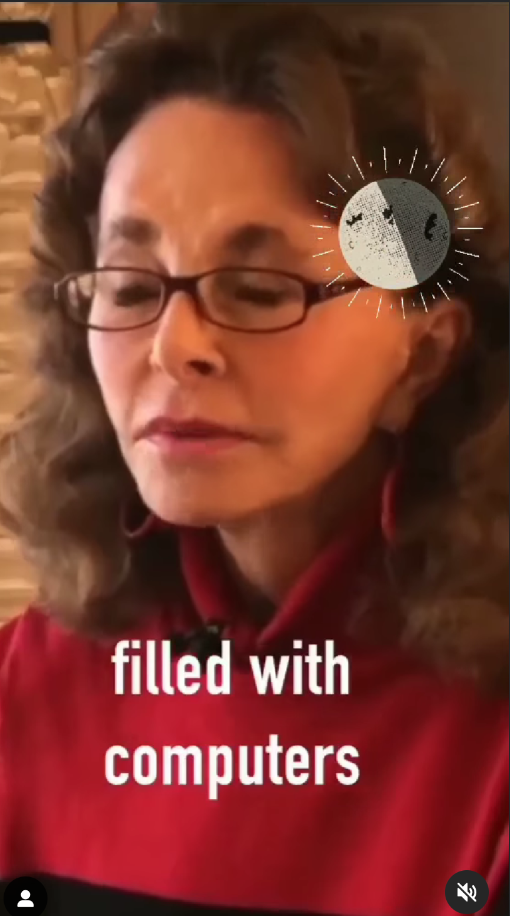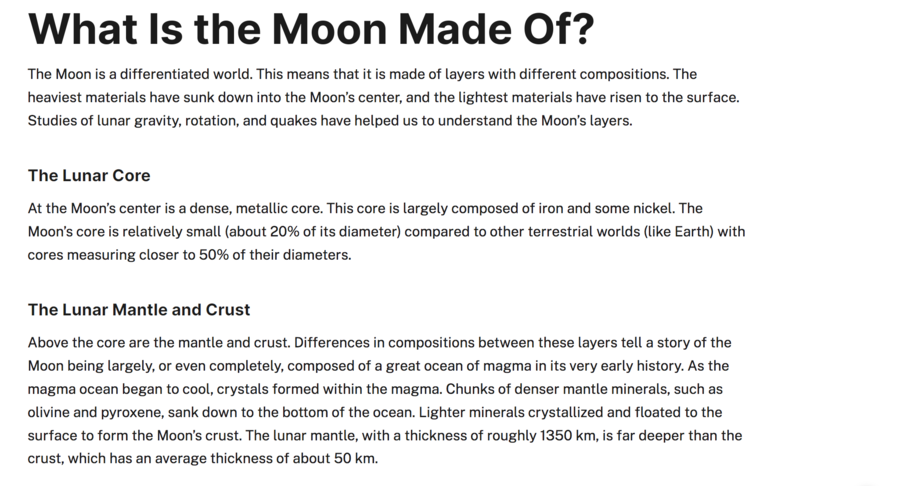
Is the moon a machine that is filled with computers? No, that's not true: The moon is a rock with a metallic core, according to NASA, the agency that has studied the moon and outer space for decades. The United States has landed men on the moon, and there have been multiple countries around the world that have sent spacecraft and robotic devices to the moon: None of them have ever found it to be a machine filled with computers. The person making the claim is known for their conspiracy theories regarding extraterrestrial activities.
The claim appeared in a video (archived here) on Instagram on March 3, 2024. It opened with a person saying:
I've been told that the moon is a machine filled with computers. It watches, observes, downloads, uploads information to someone somewhere else in the universe. It has been used as a monitoring and manipulation station by non humans for millions of years. I have talked with people who have worked in government intel agencies, people who would be CIA, NSA have said it's absolutely right.
This is what the video looked like on Instagram at the time of writing:
(Source: Instagram screenshot taken on Tues Mar 5 16:57:08 2022 UTC)
The person speaking in the video is Linda Moulton Howe. According to her website (archived here), she is a Stanford-educated journalist who first focused on environmental issues but then switched to UFOs. Now in her 80s, she continues to promote (archived here) theories about extraterrestrial activities on YouTube. Lead Stories previously fact checked her claim that four robots powered by artificial intelligence killed 29 scientists in Japan.
NASA, the National Aeronautics and Space Administration, reports on its website (archived here) about the composition of the moon:
(Source: NASA website screenshot taken on Tues Mar 5 17:02:28 2022 UTC)
As NASA reports (archived here) there are "pieces of equipment, American flags, and even a camera left behind by astronauts," but this is not what composes the moon. The website also explains the structure of the moon, and it is not filled with computers:
Earth's Moon has a core, mantle, and crust.
The Moon's core is proportionally smaller than other terrestrial bodies' cores. The solid, iron-rich inner core is 149 miles (240 kilometers) in radius. It is surrounded by a liquid iron shell 56 miles (90 kilometers) thick. A partially molten layer with a thickness of 93 miles (150 kilometers) surrounds the iron core.
The mantle extends from the top of the partially molten layer to the bottom of the Moon's crust. It is most likely made of minerals like olivine and pyroxene, which are made up of magnesium, iron, silicon, and oxygen atoms.
The crust has a thickness of about 43 miles (70 kilometers) on the Moon's near-side hemisphere and 93 miles (150 kilometers) on the far-side. It is made of oxygen, silicon, magnesium, iron, calcium, and aluminum, with small amounts of titanium, uranium, thorium, potassium, and hydrogen.
Long ago the Moon had active volcanoes, but today they are all dormant and have not erupted for millions of years.
Space.com (archived here) explains that the moon is a rock:
Children's fairytales tell us that the moon is made of cheese, but like all bodies in the solar system, rock is the more realistic ingredient. The moon's surface is covered with dead volcanoes, impact craters, and lava flows, some visible to the unaided stargazer.
Early scientists thought the dark stretches of the moon might be oceans, and so named such features mare, which is Latin for 'seas' (maria when there are more than one). They are oceans of a sort, but rather than water, such bodies are made up of pools of hardened lava. Early in the moon's history, the interior was molten enough to produce volcanoes, though it quickly cooled and hardened. Lava also burst from the crust when large enough asteroids broke through the surface.
Other Lead Stories fact checks about space can be found here.
















